When humans first began planting crops, they had a simple purpose: Grow good things to eat. They wanted more reliable food sources and weren't concerned about the potential aesthetic value plants could provide.
But we’ve come a long way in the last 12,000 years or so!
Modern gardeners have a wide array of vegetables at their disposal that are not only delicious and nutritious but often attractive and unusual too. Some of these plants are even eye-catching enough to serve as the focal point of your garden.
These types of plants are often called ornamental vegetables, though we like to think of them as “wow-factor vegetables”.
We’ll discuss some of the reasons why you may want to include them in your garden and share some of our favourites below.
What Are Ornamental Vegetables?
There’s not an exact, widely accepted definition of what an “ornamental vegetable” is and different authorities may describe them slightly differently, but the definitions centre around the fact that these plants are often grown for their aesthetic value, rather than their nutritional profile or taste.
Ornamental vegetables usually have uniquely shaped fruit, unusual and interesting-looking seed pods, or colourful leaves, but some are certainly edible and can even be even quite tasty, so these vegetables can do double duty in your garden in terms of both food value and aesthetics.
Why Grow Ornamental Vegetables?
There are a variety of reasons gardeners decide to grow ornamental vegetables, but a few of the most common include:
They Simply Find Them Interesting
Some gardeners find ornamental vegetables interesting because of the unique characteristics they present. Some will mix in carefully selected ornamentals alongside their vegetables grown for food, while others will focus entirely on ornamental cultivars and varieties.
They Want a Conversation Piece
Many gardeners love showing off their plants – especially the most interesting and unusual ones in their garden. Several ornamental vegetables work fantastically in this role and are sure to catch the eyes of visitors and spark conversations.
They Want Alternatives to Colourful Flowers
Flowers are typically the go-to choice for adding colour to outdoor spaces, but they aren’t ideally suited for every garden and gardener. Fortunately, ornamental plants often offer alternative ways to include colour, as a number of varieties and cultivars bear colourful fruit or leaves, which can play the role flowers usually do.
They Want to Capture the Interest of Children
Introducing youngsters to the world of gardening is a rewarding experience, but it can be challenging to capture their interest while growing run-of-the-mill carrots or lettuces. But if you add some strange or unusual ornamentals to the mix, you’ll find that it’s often much easier to capture the attention of kids.
They Grow Ornamental Vegetables for Utilitarian Purposes
Believe it or not, many ornamental vegetables produce fruits or seed pods that are useful for other purposes. For example, seed pods are often used for a variety of craft projects, while dried hollow gourds make excellent bird houses (which we’ll discuss further below).
These are all great reasons to grow ornamental vegetables, and there are surely plenty of others. However, it’s important to understand that you don’t need a reason to grow ornamentals – just do it because you want to!
9 of the Best Ornamental Vegetables to Grow in Your Garden
There are so many wonderful ornamental vegetables available to gardeners that many don’t know where to start, but you can’t go wrong with any of the following examples.
1. Bitter Melon
Though popular in Asian cuisine, many people charitably describe bitter melon (Momordica charantia) as having an “acquired taste.” Euphemisms about their taste aside, just about everyone would agree that bitter melon can add significant visual interest to a garden.
The plant itself is a fairly ordinary-looking vine but it's the fruit it produces that's the attention-grabber. Long, and usually green (though there is a white cultivar), the fruit somewhat resembles cucumbers or zucchinis but the skin is unusually knobbly and lumpy, especially the ‘Jounpuri’ cultivar.
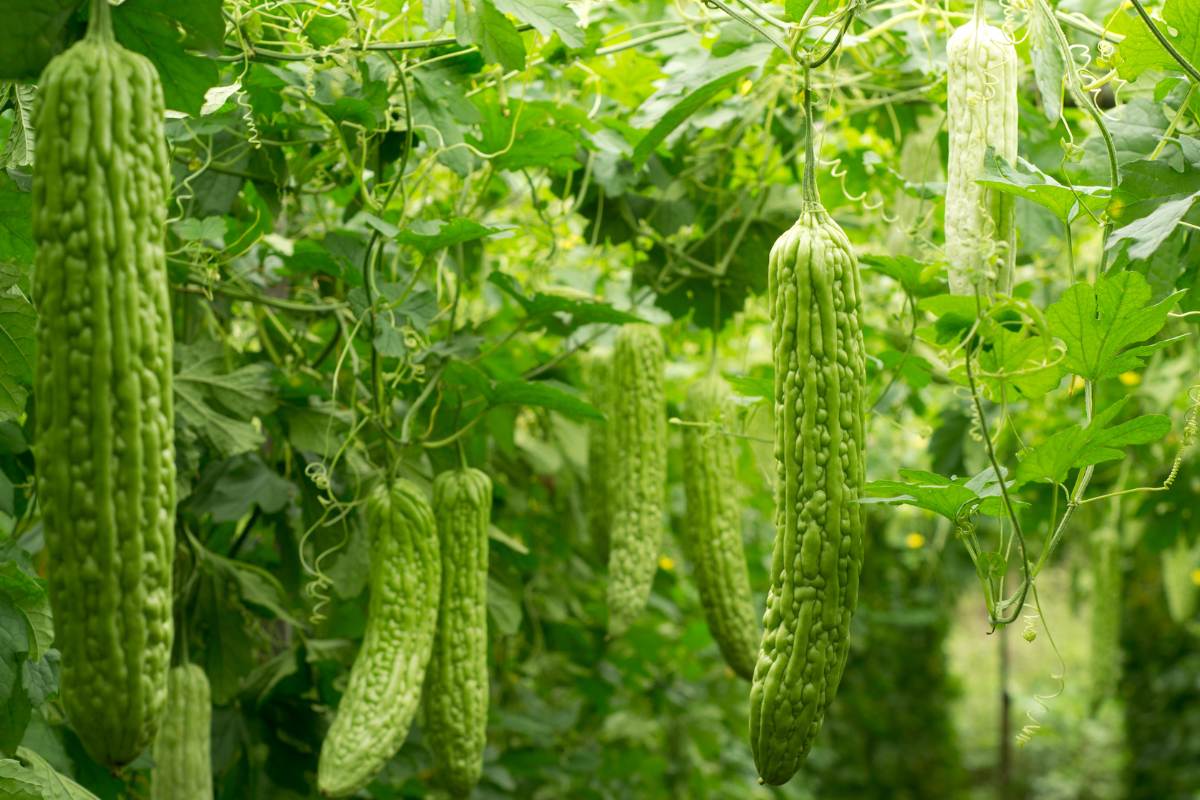 Knobbly-skinned bitter melon on the vine
Knobbly-skinned bitter melon on the vine
2. African Horned Cucumber
If you really want to catch the attention of people visiting your garden, you’ll definitely want to consider growing some African horned cucumbers (Cucumis metuliferus). The plant grows as a relatively unspectacular climbing vine, and like the bitter melon, it's the fruit that will turn heads because they are covered in large horn-like thorns. The fruit is initially dark green but the skin slowly turns bright orange or yellow as they mature. However, the fruit’s interior remains a vibrant green, presenting a striking contrast when they’re cut and served.
The taste of African horned cucumbers is often described as having hints of lime, banana, and cucumber. They store well, and many gardeners keep them around after harvest, using them as household decorations.
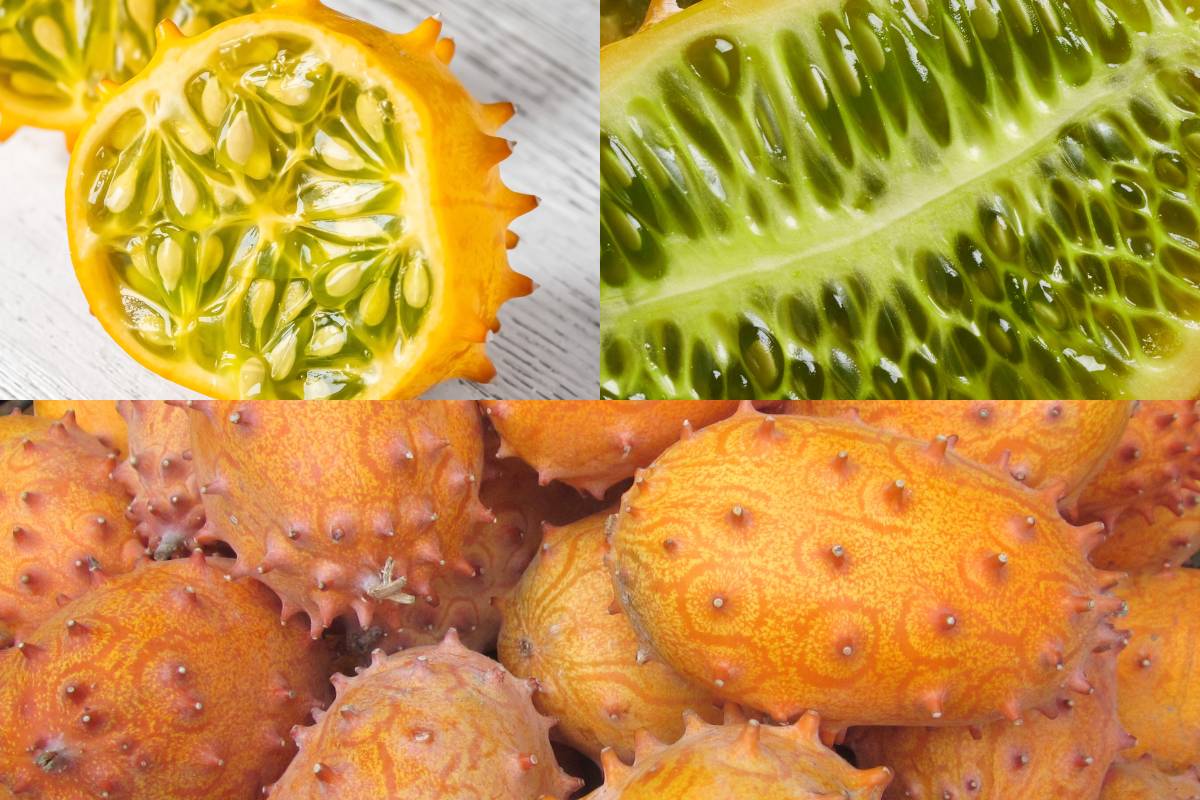 Vibrantly contrasting skin and flesh of African Horned Cucumber
Vibrantly contrasting skin and flesh of African Horned Cucumber
3. Cucamelon
Some ornamental vegetables present the best of both worlds by providing significant visual interest as well as delicious fruit. The cucamelon (Melothria scabra) is a good example.
A vigorous climbing vine, this plant produces an abundance of edible fruit which are said to taste like a cucumber with a hint of citrus. While many gardeners do enjoy eating these grape-sized fruits, they’re typically most prized for their aesthetic appeal because cucamelons look like tiny watermelons with their vibrant dark green skin and mottled white markings!
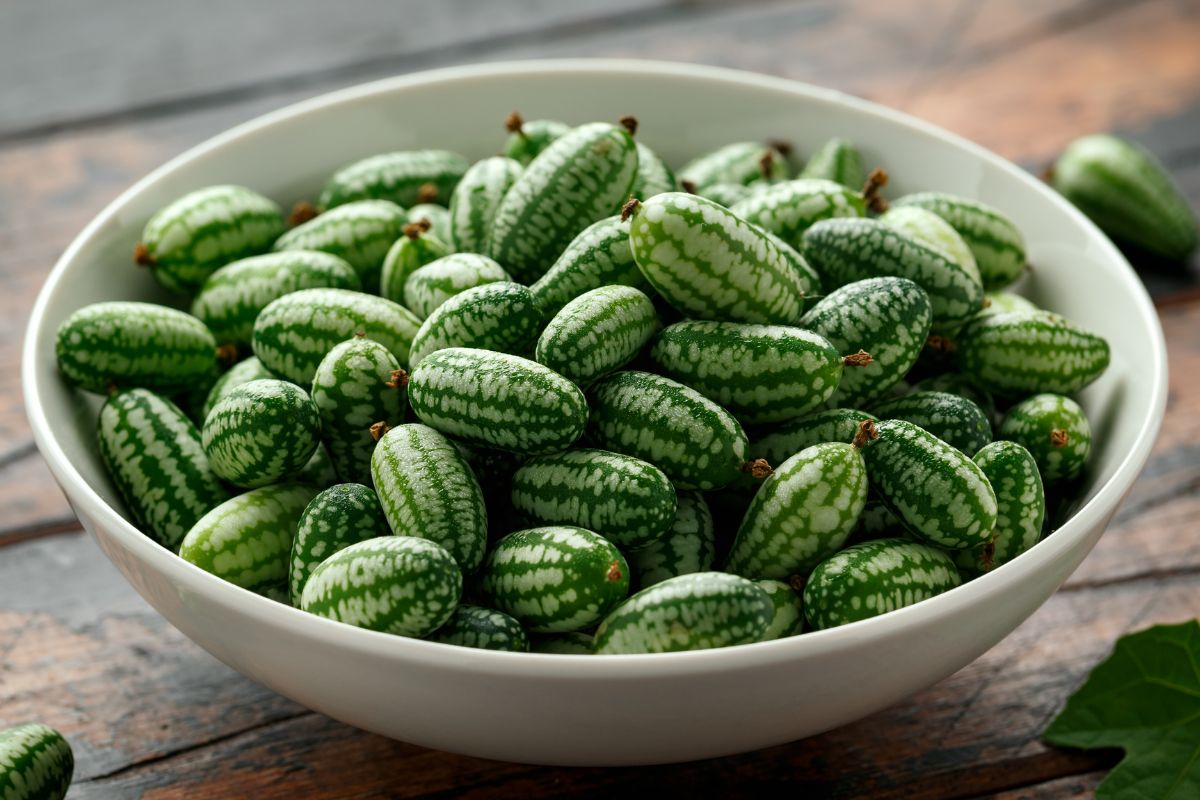
4. ‘Cekirdegi Oyali’ Watermelon
These Turkish heirloom watermelons (Citrullus lanatus) are actually pretty ordinary looking; they are typically round in shape and feature green skin and sweet, pink flesh. But the plant’s black-and-white seeds are something else!
Thanks to the way the outer seed coat dries and then splits away from the inner seed, the seeds take on a “carved” appearance. These seeds can be collected and then used in a variety of unique arts and crafts projects. These watermelons also attract and feed many beneficial insects, so they provide a variety of benefits for your garden.
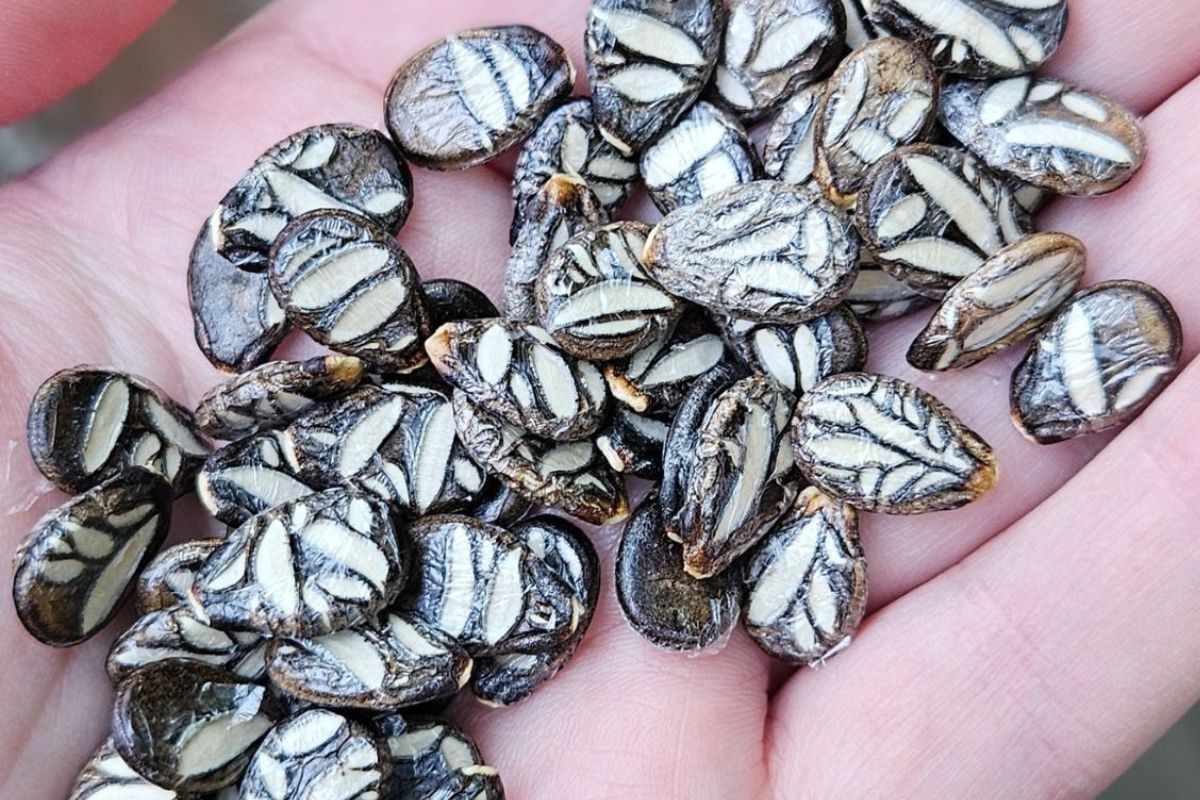
5. Gourds
Gourds are a group of interesting plants in the Family Cucurbitaceae, which includes squash, pumpkin, and cucumbers.
Unlike these other plants, which have delicious flesh and are often grown for their food value, gourds don’t have much flesh, and they’re covered in thin, hard shells. Accordingly, gourds are typically grown for ornamental purposes.
Some of the most noteworthy examples include:
- Crown of Thorns Gourd (Cucurbita pepo): Named for their shape, which resembles a small crown, these gourds vary in colour, though they’re typically white, yellow, or green. Most of these gourds also bear attractive stripes.
- Warted Gourd (Curcurbita pepo): Like Crown of Thorns, warted gourds are also a variety of the field pumpkin. These gourds can develop an incredible array of colours, from yellow and orange to white, and they can also grow in a variety of shapes. When left to dry on the vine, the skin develops small bumps or “warts,” from which the plant gets its name.
- Mini Bottle Gourd (Lagenaria siceraria): Named for their bottle-like appearance, these gourds were historically used as musical instruments and for traditional crafts. These gourds are edible if harvested while green and cooked, and many people use them in curry-based dishes.
Gourds are often grown for utilitarian purposes too, and the bottle gourds produced by the species Lagenaria siceraria can also be used to make great birdhouses! Other gourds, such as the sponge gourd (Luffa aegyptiaca), are dried and used as kitchen or bathroom sponges.
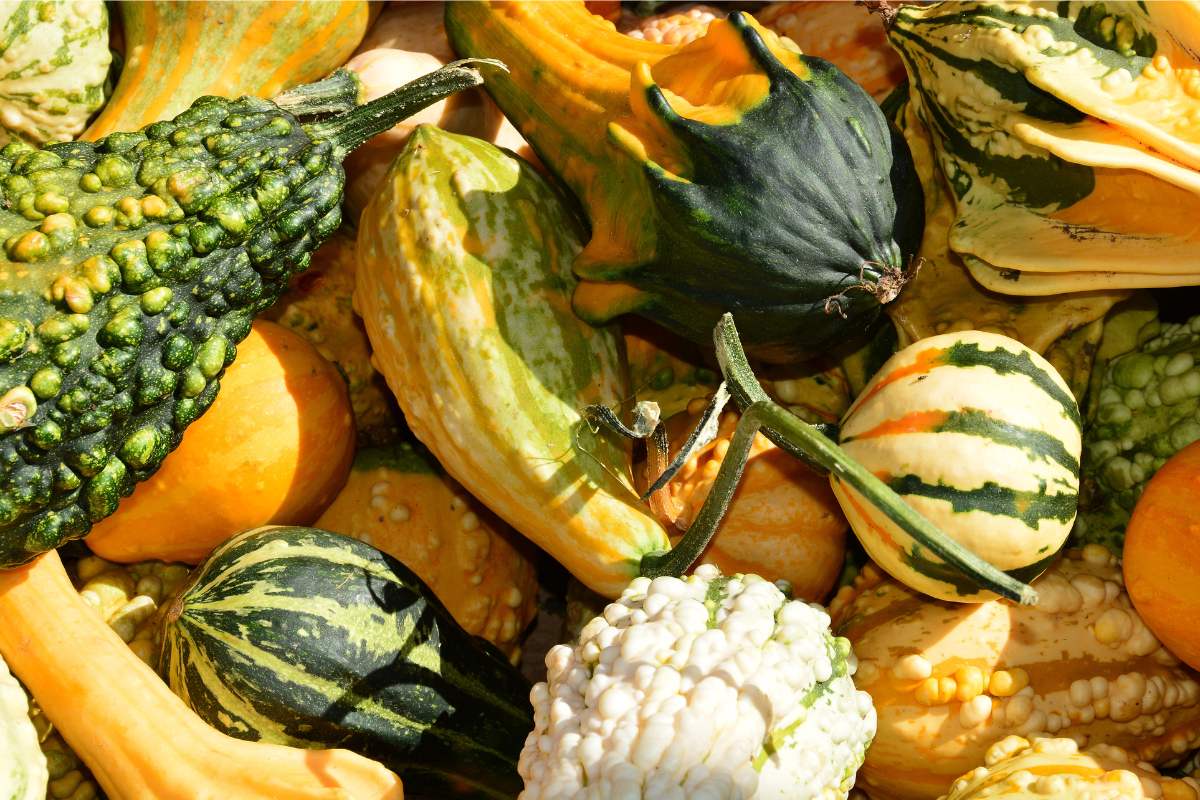 Gourds provide a kaleidoscope of colour and texture
Gourds provide a kaleidoscope of colour and texture
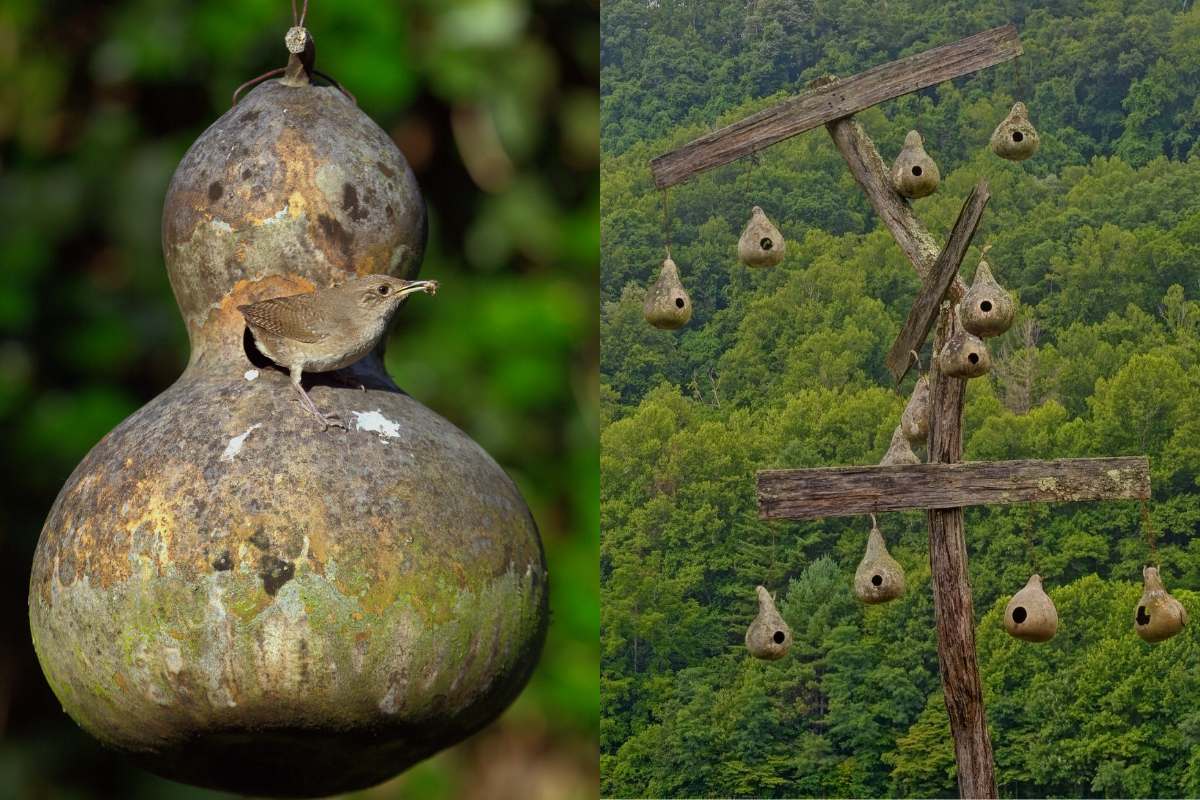 Gourds used as bird houses!
Gourds used as bird houses!
6. Snake Bean
Snake beans (Vigna unguiculata var. sesquipedalis), especially the ‘Red Dragon’ cultivar, are some of the most awesome beans you can grow in your garden.
These massively long beans reach 70 cm in length and have red seeds and tips. There is also a ‘Black-Seeded’ cultivar that is relatively similar and also deserving of consideration. Snake beans are edible, and can be served in a variety of ways. You can eat them raw (they’re commonly incorporated into salads), but they’re also tasty when stir-fried or sauteed.
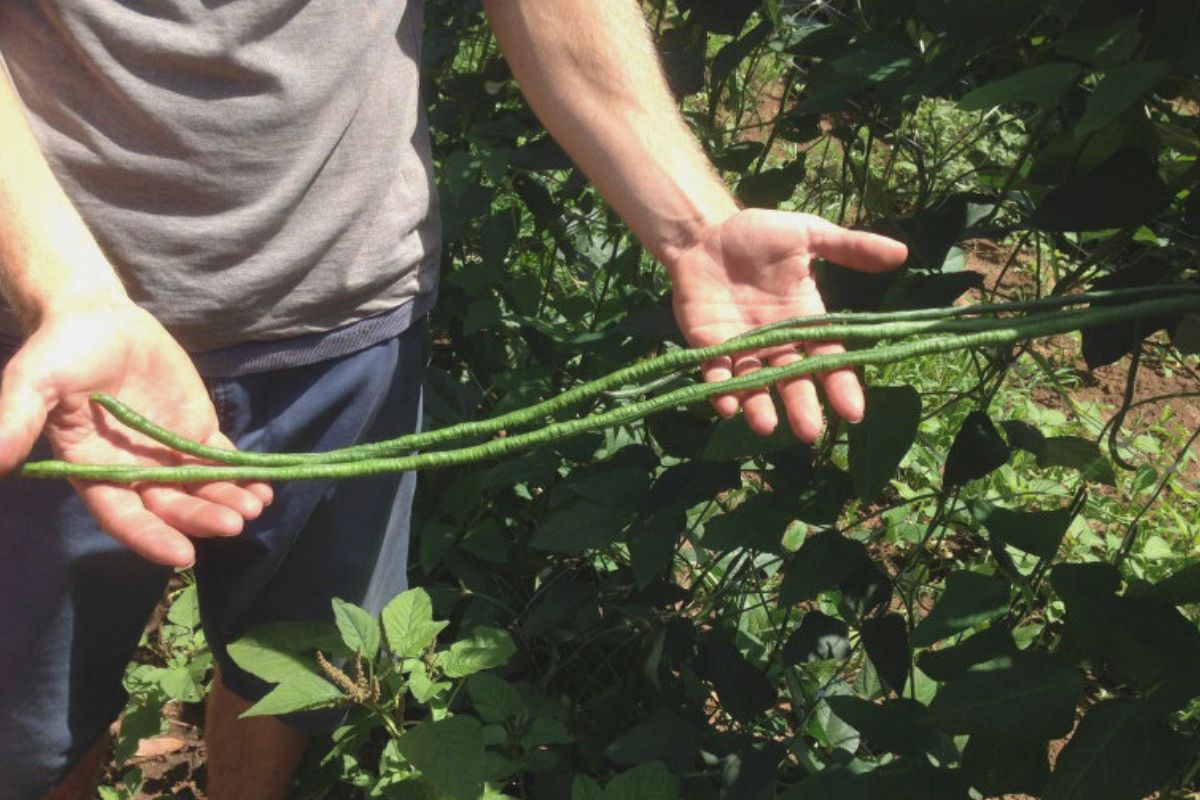
7. Multicolour Corn/Maize
Corn (Zea mays) is most commonly grown for its food value, but several varieties are popular for the ornamental appeal they provide especially in terms of colour. The ‘Blue Hopi’ cultivar bears blue kernels, while the ‘Green Oaxacan’ cultivar has deep green-coloured kernels which develop characteristic “dents” as they dry.
The aptly named ‘Bloody Butcher’ cultivar has blood-red kernels (which also dent as they dry), while the ‘Striped Japonica’ cultivar has even deeper red to burgundy kernels, and pink-green-and-white-striped leaves. While these cultivars are all gorgeous, no corn cultivar is as magnificent as ‘Glass Gem.’ It not only bears a literal rainbow of colours, but the individual kernels are also semi-translucent.
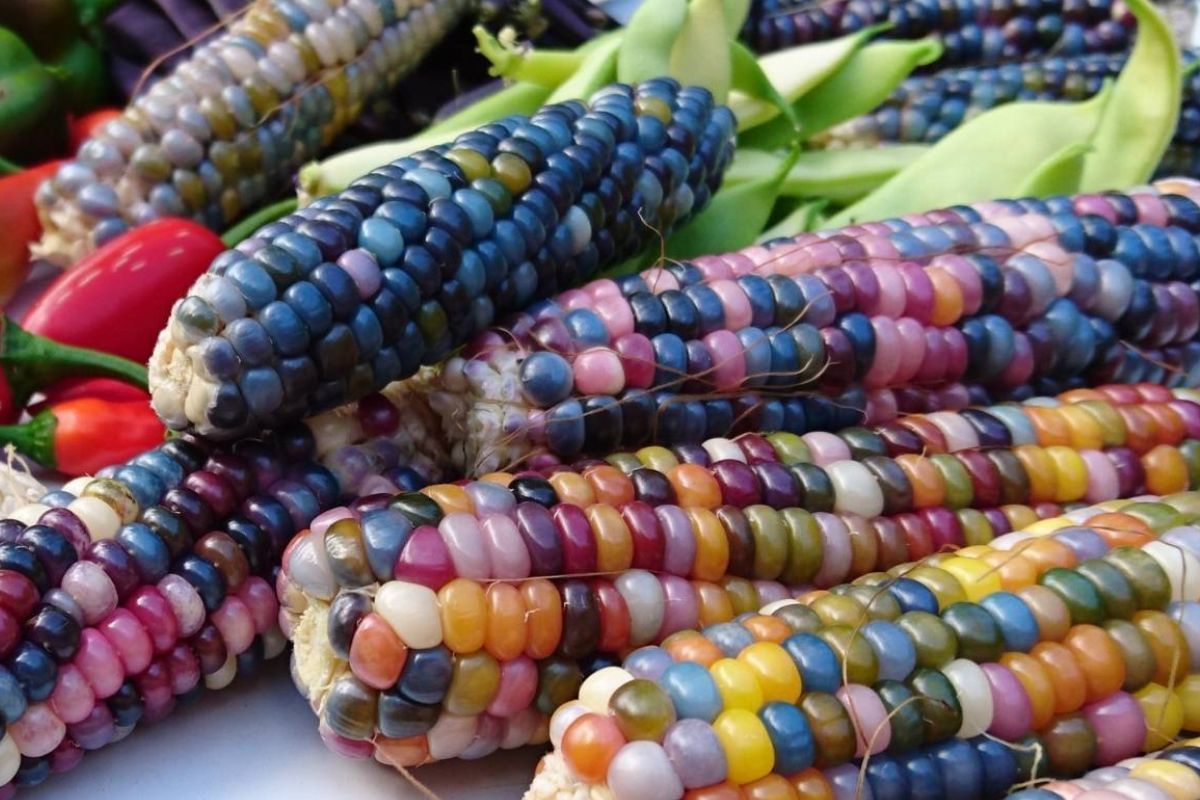
8. Ornamental Kale
Need to add some colour to your garden during the winter when flowers are scarce? Look no further than ornamental kale (Brassica oleracea).
Prized for its colourful, frilly leaves rather than its culinary value (it’s typically quite bitter), many gardeners find these plants provide exactly the kind of colour they’re looking for in the winter. You can even obtain mixed-colour packs that’ll yield an assortment of pink, purple, and white plants.
If you want to grow your kale and eat it too, there are cultivars such as ‘Scarlet’ that are not only tasty, but also brightly coloured.
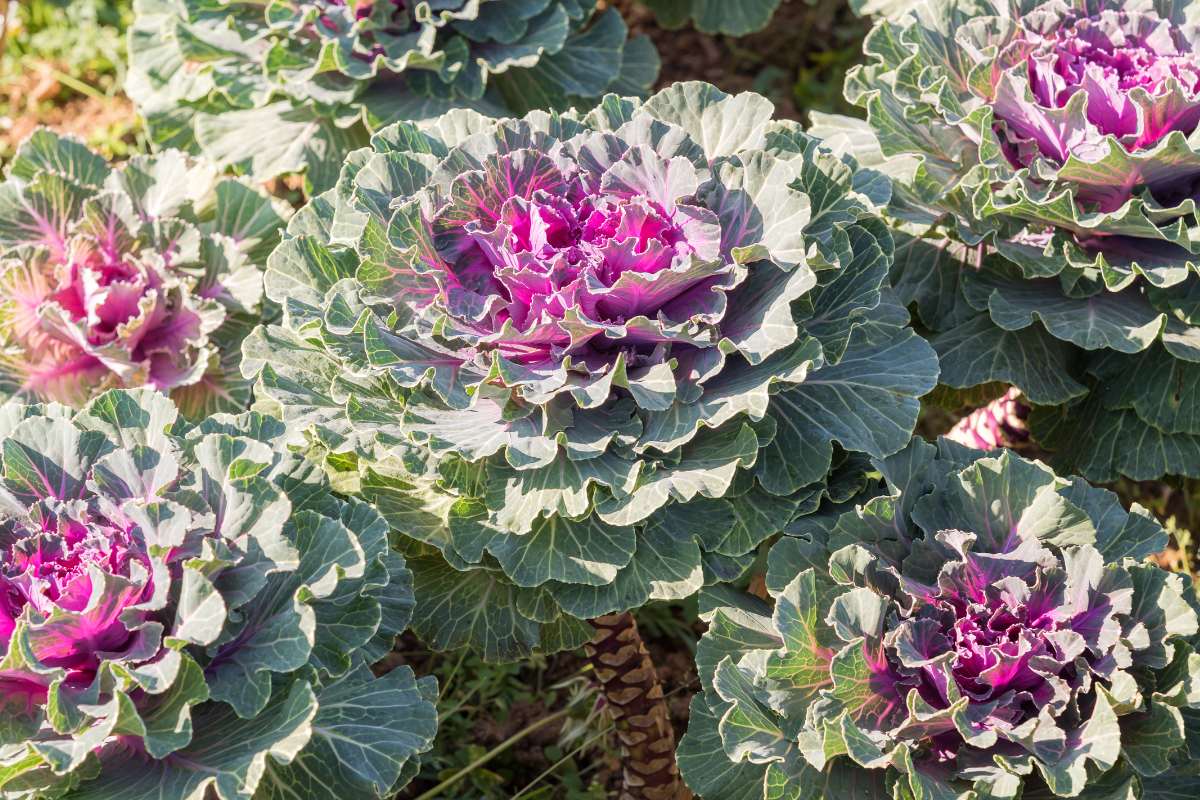 Bright colour in a garden bed provided by Ornamental Kale
Bright colour in a garden bed provided by Ornamental Kale
9. Romanesco Broccoli
Most heading ornamental brassicas are grown for their colour or unusual leaf shapes such as the ornamental kale, but ‘Romanesco’ broccoli (Brassica oleracea) is beloved for its interesting shape and texture.
Technically a cauliflower cultivar rather than a type of broccoli, Romanesco produces pale green flower heads up to 20 cm in diameter that have a distinctive fractal spiral pattern that is instantly eye-catching. Most commonly consumed raw, this Brassica can be cooked if desired.
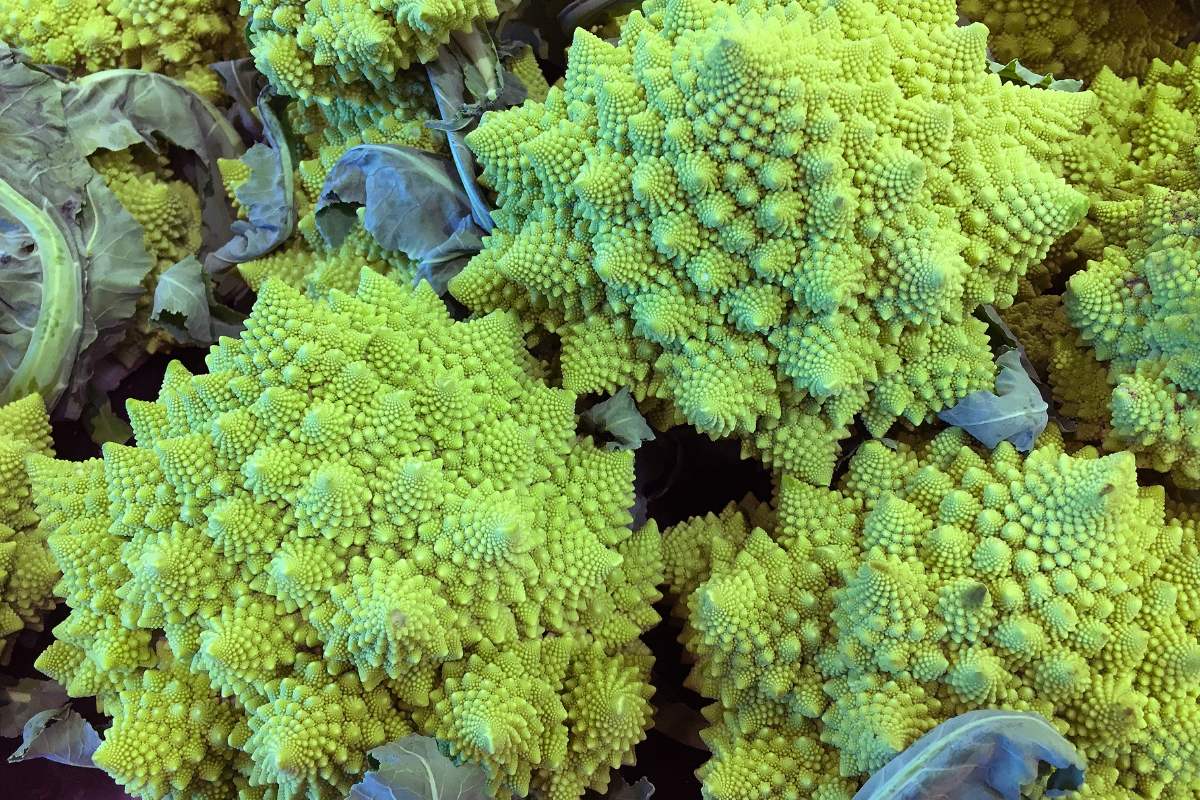 Spiral fractal patterns of Romanesco Broccoli
Spiral fractal patterns of Romanesco Broccoli
***
There’s nothing wrong with growing vegetables for food purposes, but it’s often helpful to consider the other things that vegetables can offer your garden before choosing which seeds to plant. As always, consider things like your climate, soil characteristics, and the level of sun exposure your garden gets before finalising your choices, as this will help set you up for success with your new ornamental and wow-factor vegetables!





